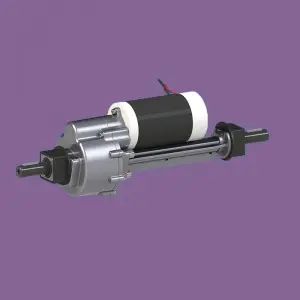The transaxle is a critical component in a vehicle’s driveline, responsible for transmitting power from the engine to the wheels. It combines the functions of a variable-speed transmission and a differential that distributes power to the wheels. The Transaxle Control Module (TCM) is an important component of the transaxle system and plays a vital role in managing the operation and performance of the transaxle. In this article, we’ll take a closer look at the function and significance of the transaxle control module and its impact on the overall transaxle functionality.
The transaxle control module, also known as the transmission control module (TCM), is the electronic control unit responsible for managing the operation of the transaxle. It is an important part of modern vehicles equipped with automatic transmissions because it controls all aspects of transaxle operation, including gear shifting, torque converter lock-up, and other transmission-related functions.
One of the primary functions of the transaxle control module is to monitor and control gear changes within the transaxle. The TCM uses input from various sensors such as vehicle speed sensor, throttle position sensor, and engine speed sensor to determine the best timing and strategy for shifting gears. By analyzing these inputs, the TCM can adjust shift points and patterns to ensure smooth and efficient shifts, optimizing the vehicle’s performance and fuel efficiency.
In addition to shifting gears, the transaxle control module also manages the operation of torque converter lockup. The torque converter is a fluid coupling that allows the engine to rotate independently of the transaxle, providing smooth power transfer and enabling the vehicle to stop without stalling. The TCM controls the engagement and disengagement of the torque converter lockup to optimize fuel efficiency and performance, especially under highway driving conditions.
Additionally, the transaxle control module plays a vital role in diagnosing and managing any issues or faults within the transaxle system. The TCM continuously monitors the transaxle for any abnormal conditions, such as clutch slippage, overheating, or sensor failure. If any problems are detected, the TCM can trigger a warning light on the dashboard, enter “limp mode” to protect the transaxle from further damage, and store diagnostic trouble codes to help technicians diagnose and repair the problem.
The TCM also communicates with other onboard control modules, such as the engine control module (ECM) and the anti-lock braking system (ABS) module, to coordinate the overall operation of the vehicle. By sharing information with these modules, the TCM optimizes vehicle performance, drivability and safety by coordinating the operation of the engine, brakes and transaxle.
To summarize, the transaxle control module is a critical component of the vehicle’s drivetrain, responsible for managing the operation of the transaxle and ensuring optimal performance, fuel efficiency, and drivability. The TCM plays a vital role in the overall functioning of the vehicle by controlling gear changes, torque converter lock-up, and diagnosing problems within the transaxle. Its integration with other control modules further enhances vehicle performance and safety. As vehicle technology continues to advance, the transaxle control module’s role in optimizing the owner’s driving experience will only become more important.
Post time: Aug-12-2024


